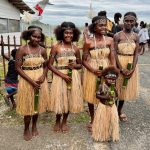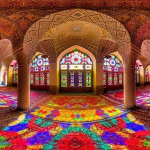Bhutan, the Land of the Thunder Dragon, offers travelers a rare blend of spiritual depth, cultural authenticity, and natural beauty. This guide helps you navigate everything from the country’s unique currency system to shopping for meaningful, handcrafted souvenirs. Bhutanese banknotes are more than just currency—they’re a reflection of national heritage, featuring portraits of revered monarchs and iconic landmarks. Whether exchanging money in Thimphu, browsing Paro’s bustling markets, or crafting your own stamp, understanding Bhutan’s monetary and cultural symbols will enrich your journey through this Himalayan kingdom.
Table of Contents
1. The Ngultrum: Currency of Bhutan
Official Currency: The Ngultrum (Nu.)
Bhutan’s official currency is the Ngultrum (Nu), issued by the Royal Monetary Authority of Bhutan. It is pegged at par (1:1) with the Indian Rupee (INR), and both currencies are widely accepted across the country.
- 1 Ngultrum = 100 Chhertum (Chetrum)
Currency Denominations
- Banknotes: Nu. 1, 5, 10, 20, 50, 100, 500, 1000
- Coins: 25 Chhertum, 50 Chhertum, 1 Ngultrum
2. Bhutanese Banknotes: A Window into National Heritage
Bhutanese banknotes are beautifully designed, combining vibrant artwork with national pride. Each denomination honors a monarch and features a culturally significant site:
Soruce: https://www.bhutanmajestictravel.com/about-bhutan/monarchy/
Portraits on the Front
- Nu. 1000 & Nu. 50: The Nu. 1000 and Nu. 50 banknotes feature Bhutan’s current monarch, King Jigme Khesar Namgyel Wangchuck, a modern symbol of the nation. He ascended the throne in 2006 at age 26, one of the world’s youngest kings. Educated at Wheaton College and Oxford University, he combines global insight with strong national dedication. King Jigme Khesar led Bhutan’s transition to democracy by overseeing the country’s first constitution and its first parliamentary elections.
- Nu. 100 & Nu. 10: Feature the fourth king, Jigme Singye Wangchuck, who in 1972 introduced the concept of Gross National Happiness (GNH), making Bhutan one of the few countries to measure development beyond GDP.
- Nu. 20: Honors the third king, Jigme Dorji Wangchuck, regarded as the Father of Modern Bhutan—he ended feudalism, created Bhutan’s legal system, and established its first parliament in 1953.
- Nu. 500: The Nu. 500 banknote bears the image of the first king, Ugyen Wangchuck, who unified Bhutan and secured independence from Qing rule with British assistance. Known as the founding monarch, he helped establish Bhutan as an independent kingdom, ending tribal divisions and foreign domination.
Landmarks on the Reverse
- Nu. 1000 — Buddha Dordenma Statue or Tiger’s Nest Monastery (Paro Taktsang):
Featuring either the majestic Buddha Dordenma statue or the iconic Tiger’s Nest Monastery, both symbols of Bhutan’s rich spiritual heritage. - Nu. 500 & Nu. 20 — Punakha Dzong:
Situated at the confluence of the “Mother” and “Father” rivers, Punakha Dzong was the winter palace of Bhutan’s religious leader and served as the capital until 1955. It remains the traditional coronation site for Bhutanese kings. - Nu. 100 — National Assembly Building:
The modern legislative building that represents Bhutan’s parliamentary democracy. - Nu. 50 — Tashichho Dzong:
The seat of Bhutan’s government and the office of the king, this dzong is a prominent symbol of political power and religious authority. - Nu. 10 — Paro Dzong:
Known as the “Fortress on a Heap of Jewels,” Paro Dzong is a fortress perched on a cliff. It is a cultural landmark and famously served as the backdrop for the wedding photos of actors Tony Leung and Carina Lau.
3. Exchange Rates (as of June 2025)
- 1 USD ≈ 83.15 Nu.
- 1 EUR ≈ 89.72 Nu.
- 1 AUD ≈ 55.38 Nu.
- 1 JPY ≈ 0.52 Nu.
- 1 CNY ≈ 11.44 Nu.
- 1 HKD ≈ 10.64 Nu.
- 1 SGD ≈ 61.32 Nu.
- 1 TWD ≈ 2.57 Nu.
Rates may fluctuate—check before you travel. To see the latest currency exchange rates, please refer to XE and OANDA.
4. Currency Exchange & Banking Tips
Where to Exchange Money
- Paro International Airport – Foreign exchange counter available upon arrival.
- Major Banks – Found in Paro, Thimphu, and other key towns like Punakha and Phuentsholing.
- Some Hotels – High-end hotels may exchange USD only, with limited availability.
- Land Border with India – You can enter Bhutan via the land border at Phuentsholing, adjacent to the Indian town of Jaigaon (West Bengal). Currency exchange facilities and banks are available on both sides of the border. This is a popular entry point for travelers coming from Kolkata, Siliguri, or Bagdogra.
Currency Exchange Tips
- Exchange currency early (airport or in Paro/Thimphu)
- Carry sufficient cash (preferably USD or EUR) to exchange for Ngultrum upon arrival, especially if you’re heading to remote areas.
- Avoid relying on ATMs in rural areas
- Carry enough cash in Nu. or INR for local purchases
- Unused Ngultrum can be exchanged back upon departure
5. Using Credit Cards & ATMs
- Credit cards are accepted sparingly, mostly in:
- High-end hotels
- Upscale restaurants
- Select handicraft stores (Paro & Thimphu)
- Cards may incur a 2–3% processing fee
- ATMs:
- Available in major towns only
- Not always reliable for international cards
6. Shopping in Bhutan
Bhutan offers a humble yet culturally rich shopping experience. You won’t find international luxury brands or high-end boutiques—but what you will find is far more unique and authentic. From handmade crafts to culturally significant items, Bhutanese souvenirs are often handcrafted and infused with deep traditional and artistic value.
Where to Shop
- Markets in Paro & Thimphu – Best for local goods
- Norzin Lam (Thimphu) – Shops and street vendors
- Paro Airport Duty-Free – Convenient last-minute shopping
- Handicraft Centers & Co-ops – Run by artisans and women’s groups; purchases directly support local communities
7. What to Buy: Authentic Bhutanese Souvenirs
Bhutan’s souvenirs are deeply rooted in spirituality and craftsmanship:
- Handwoven Textiles – Scarves and fabrics made on traditional looms
- Handmade Carpets – Colorful Tibetan-style rugs
- Wooden Bowls (Dapas) – For rituals and daily use
- Metal Crafts – Prayer wheels, statues, ritual bells
- Masks – Used in masked dances and festivals
- Bhutanese Incense – Made with natural herbs
- Thangka Paintings – Detailed scrolls with Buddhist themes
- Postcards & Photos – Featuring dzongs, Himalayan landscapes, and festivals
- Gho & Kira – Bhutan’s traditional dress, Gho and Kira, reflect its rich culture and make great souvenirs. Visitors are encouraged to wear them at dzongs and formal events to show respect.
- Local Products – Bhutanese honey, candy, and Ara (barley-based liquor)
⚠️ Please Note: Forbidden Exports — Antiques, sacred artifacts, and wildlife products cannot be taken out of Bhutan without official permits.

8. Unique Souvenirs: Bhutanese Stamps
Bhutan is famous for collectible, innovative postage stamps:
- 3D, talking, CD or vinyl-shaped stamps
- Personalized stamps – Create your own with a photo at:
- Bhutan Postal Museum
- Major post offices
- Limited-edition sets – Themes include Royal family, endangered wildlife, space exploration and astronauts, and traditional arts
These make excellent keepsakes or gifts for collectors.
9. Final Travel Tips
- Carry sufficient cash for rural travel and shopping
- Exchange money early in your trip
- Prioritize handcrafted local items over imports
- Don’t miss the chance to create your own stamp—a truly Bhutanese experience
Want to learn more about Bhutan?
Dive into our Ultimate Travel Guide – your one-stop resource for everything from visa rules and packing tips to Bhutanese cuisine, festivals, traditions, and spiritual landmarks. Explore culture, landscapes, and legends for a truly immersive and unforgettable Himalayan journey.
Are You Ready to Experience Bhutan with YPT?
Join us for a transformative journey through the Land of the Thunder Dragon—where ancient culture, breathtaking landscapes, and mindful adventure await. Discover our upcoming tours and take the first step toward your unforgettable Himalayan escape today.





